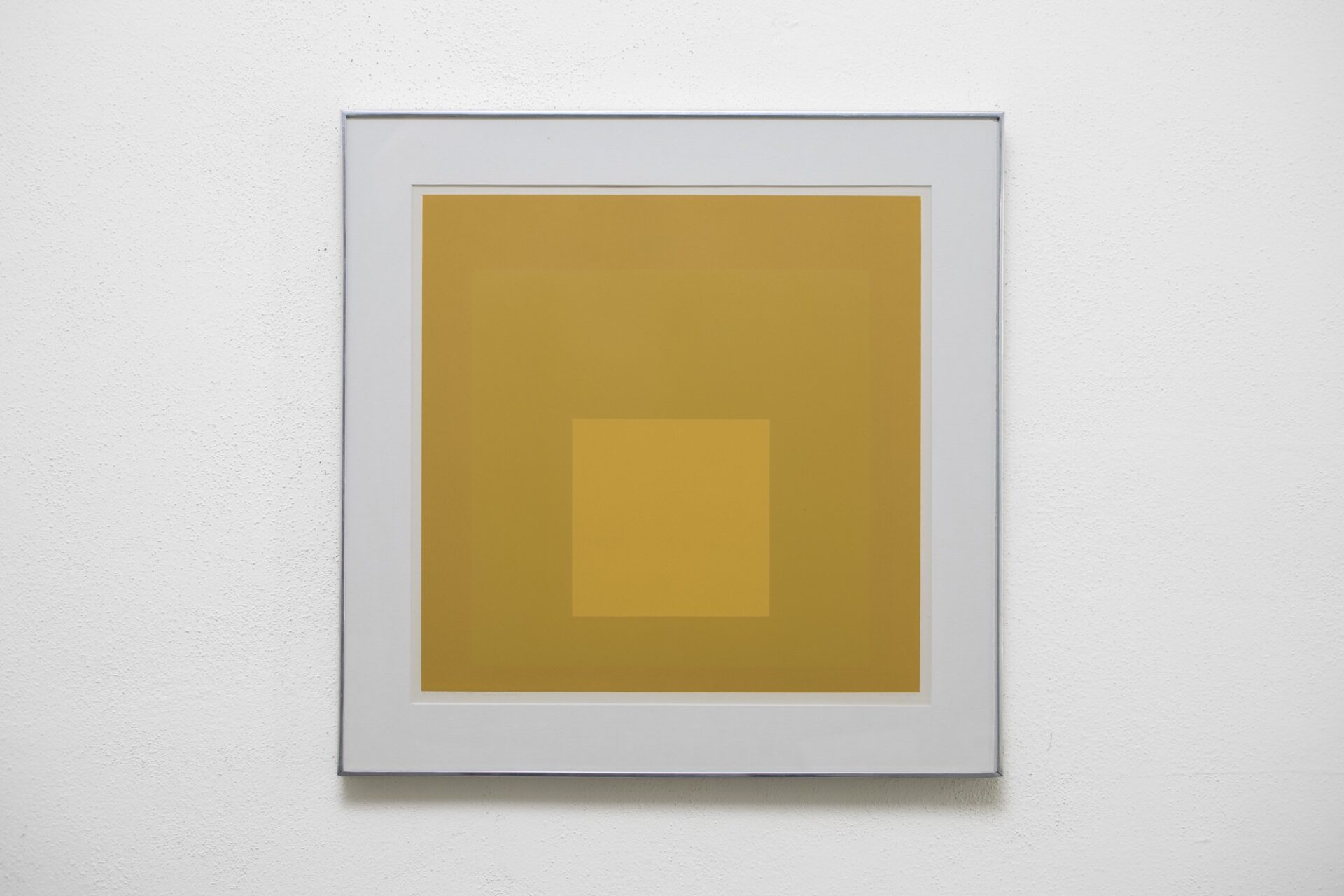Josef Albers was born in Bottrop, Germany, and studied art in Essen and Munich before entering the Bauhaus in Weimar in 1920; he later taught at the Bauhaus in Dessau. in 1933, he emigrated to the United States, becoming the head of the art department at Black Mountain College, near Asheville, North Carolina. Albers had his first solo exhibition in New York in 1936, at the New Art Circle gallery, and a retrospective of his work was held at the Museum of Modern Art, New York, 1971. “I’ve seen a lot of paintings by Albers,” wrote Donald Judd, “often singly, over half the world. They are always amazingly beautiful.”1
Midnight + Noon VI and III are from a series of eight lithographs by Albers, produced by Tamarind Lithography Workshop. In the set, four of the prints are yellow and four are black; each print in the series was made using one color ink applied to two separate plates, with the squares overlapping to produce three different color variations.
Albers had worked at Tamarind as a visiting artist in May 1962, during which he made the set of four Interlinear lithographs. In 1963, Albers had another four-week fellowship at Tamarind, which saw the creation of Day + Night, a set of ten color lithographs. Albers’s final visit to Tamarind was in June 1964; at this time, he completed the Midnight + Noon suite.
Albers worked with printer Kenneth Tyler to produce the Midnight + Noon series, and as Brenda Danilowitz described in The Prints of Josef Albers: A Catalogue Raisonné 1915–1976:
Tyler understood that Albers, though satisfied with the color quality of screenprint inks, was searching for a method that would recreate the transparency and luminosity of his painted squares. To do this, he came up with a method of thinning the lithography inks to create transparent colors of different densities and dilutions, two of which, when overlapped, would result in a third color. . . . To achieve the perfectly even, yet tactile, matte surfaces, Tyler experimented by placing some of the completed prints face down on a sheet of porous paper and then running them through the press again, in what he described as a “blotting” run, before the printing of the final color. For Midnight + Noon, every print was blotted in this way.2
